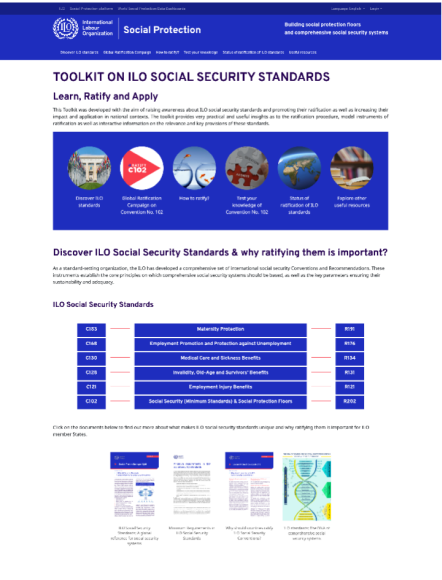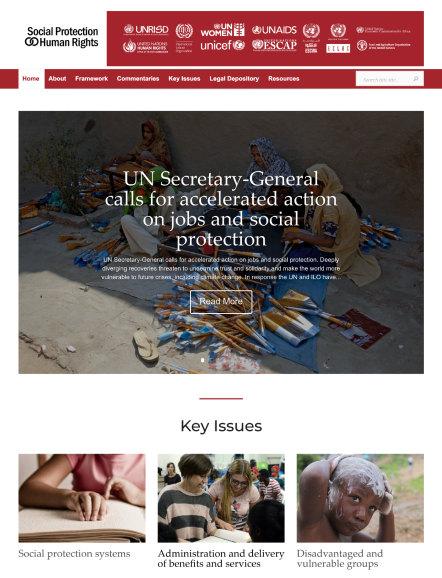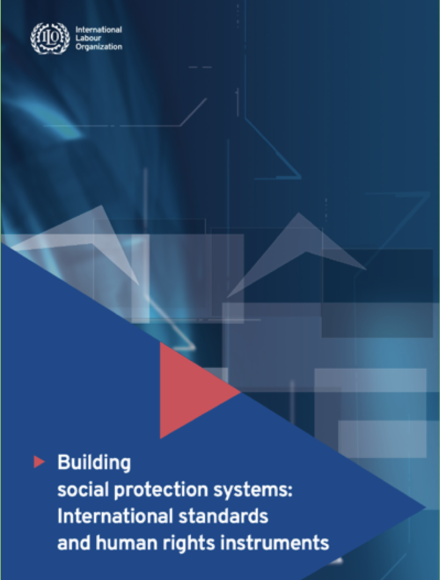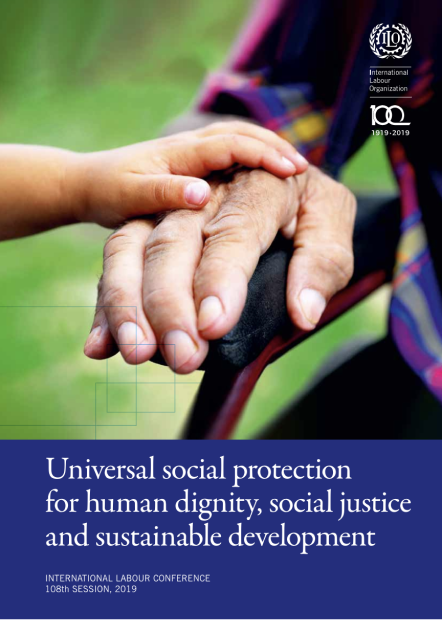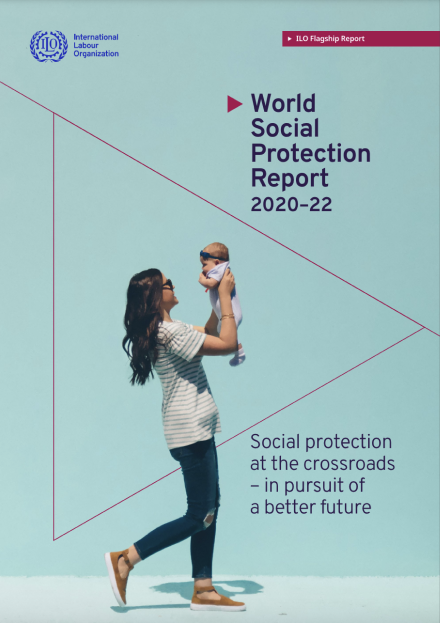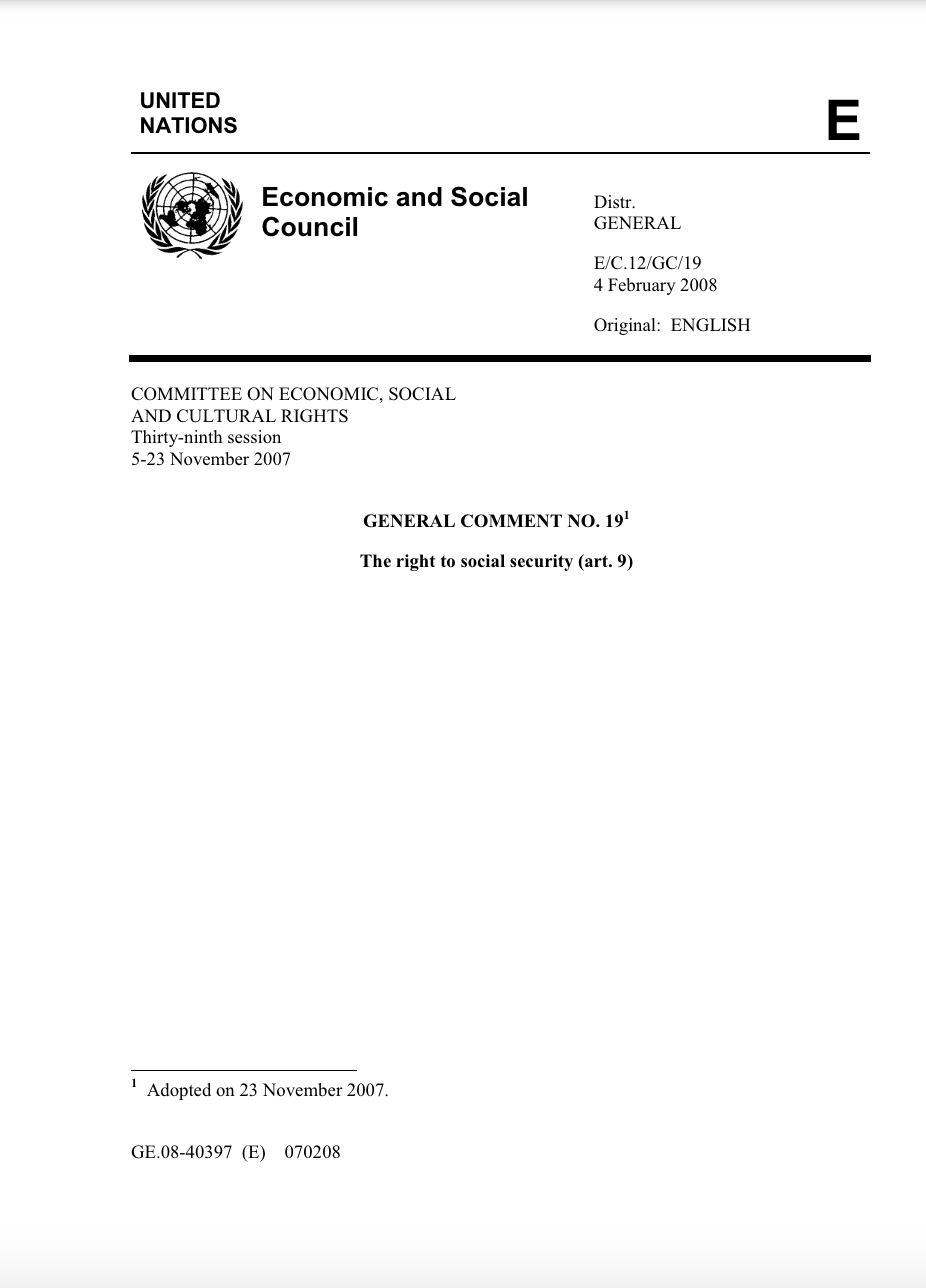Social Security (Minimum Standards) Convention, 1952 (No. 102)
A gateway for achieving rights-based universal social protection

Key message
From Cradle to Grave: The Human Right to Social Security Throughout the Life Cycle

Social Security: More Than Just a Human Right, an Investment in People and Progress

Convention No. 102: Setting Minimum Standards for Social Protection Systems Globally

Championing Decent Work Through Social Security Standards

Universally Accepted, Nationally Relevant: Social Security Standards for All

Shaping the Social Protection Landscape: The Combined Power of Convention No. 102 and Recommendation No. 202

Turning the Human Right to Social Security into Reality

A Pathway to Progress: Why Ratifying Convention No. 102 Matters

Context
The COVID-19 crisis exposed persistent coverage and adequacy gaps:
- Many lack protection (4 billion people globally) due to high informality, inequality, limited fiscal space, institutional fragmentation and demographic shifts.
- Only 30.6% of the persons in working age have access to comprehensive social security (i.e. protection against all nine contingencies).
- Women’s coverage lagged behind men’s by 8%.
Universal, comprehensive, adequate and sustainable social protection systems grounded in international principles and legal frameworks matter:
- Helps weather crises like COVID-19.
- Protects people’s health, jobs and incomes by providing income security and healthcare.
- Promotes equality and security.
SDG 1.3.1: Effective coverage by function of social protection (%)
Call to action
- The ILO is implementing a Global campaign to increase ratifications and effective implementation of ILO Convention No. 102, which sets minimum social security standards.
- Goal: Reach 70 ratifications by 2026.
- ILO constituents (governments, employers’ and workers’ organizations), as well as other relevant stakeholders, are invited to participate in this global initiative.
Key features of Convention No. 102
Benefits of ratifying and implementing Convention No. 102
Promoting social justice by reducing poverty, vulnerability and inequality

Improving financial access to healthcare and addressing the social determinants of health

Fulfilling international and regional commitments

Meeting the 2030 sustainable development goals

Empowering States to build universal, comprehensive, adequate and sustainable social protection systems

Good governance for increased public confidence and social peace

Preventing the levelling-down of national social security systems by creating a global level playing field

Mitigating the social impacts of health, financial and economic crises

Lending a voice to workers and employers for effective application

Encouraging participatory management and financial sustainability

Increasing labour productivity, competitiveness, and social solidarity

Breaking the cycle of vulnerability, poverty and social exclusion and strengthening the social contract.

How to implement Convention No. 102 at national level
Convention No. 102 establishes minimum benchmarks as regards the quality and quantity of the benefits to be provided, including with regard to:
- definition of the contingency;
- persons to be protected;
- qualifying conditions;
- nature and scope of benefits;
- duration of the benefit.
The Convention also sets out core principles, including:
- non-discrimination and equality treatment;
- the overall responsability of the State;
- the right of complaint and appeal;
- collective financing of benefits;
- participatory management of social security schemes;
- acceptable benefit suspension cases.

Persons protected under the Convention

Convention No. 102 gives each country the choice to determine the type of mechanism it will use to demonstrate compliance with each of the accepted contingencies, taking into account the types of schemes that make up the national system. Accordingly, it sets minimum thresholds for persons covered by schemes that protect employees, those that protect economically active persons (self-employed persons in addition to employees) or those that protect vulnerable groups of the population through means-tested social assistance.
Flexibility

The Convention allows ratifying States whose economies and medical facilities are still under development to temporarily limit the scope of their national law to larger enterprises, namely “employees in industrial workplaces employing at least 20 persons”. This temporary exception matches the approaches followed by many countries which firstly apply their national legal frameworks to the bigger economic operators before progressively extending social security protection to smaller enterprises and self-employed persons.
Gradual Implementation

The Convention does not apply to seafarers or fishers, as they are covered by other standards. No other categories of workers are specifically excluded from the application of the Convention.
Inclusivity
Level of benefits

This refers to benefits that represent a certain percentage of the previous earnings of the protected person. Convention No. 102 assesses the adequacy of such benefits according to the earnings of a person representative of a skilled worker in the country. Skilled workers and workers with lower earnings should receive a replacement rate at least at the levels set out by the Convention. A maximum limit can be imposed on the contribution or benefit rate, but it should not be lower than the earnings of a skilled worker as defined in the Convention. This guarantees that those earning up to the level of a skilled worker will receive at least the minimum replacement rates outlined in the Convention. For workers with higher earnings, benefits should bear a reasonable relation to those rates.
Benefits calculated from previous earnings

Convention No.102 assesses the level of flat-rate benefits in relation to the level of earnings of a person representative of an unskilled worker in each country (Article 66). This method can also be applied to assess the level of the minimum benefits provided by social insurance schemes.
Flat-rate benefits provided by tax or mixed-financing schemes

Whenever a scheme conditions the payment of benefits to the means of the beneficiary’s family, Convention No.102 requires that the level of the benefit must be at least sufficient to maintain the family of the beneficiary in health and decency. The benefit, together with the family’s other means, should at least reach the level set for flat-rate benefits. National rules should set out which of a family’s assets can be excluded from the means test, for example, a person’s home or car. The Convention does not consider the use of means-tested schemes in the case of employment injury, maternity and medical care.
Means-tested benefits
Core principals
While the Convention has a significant level of built-in flexibility, it does not compromise on the observance of a number of core principles:


The overall and general responsibility of the State (Articles 71 and 72)

Review of periodical payments (Articles 65 and 66)

Equality of treatment (Article 68)

Suspension of benefits (Article 69)

Right of complaint and appeal (Article 70)

Proper financing and administration of social security institutions (Article 71)

















